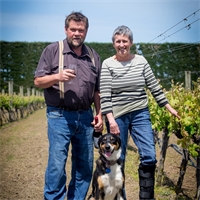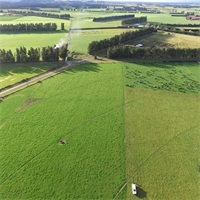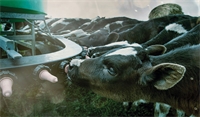Words supplied by Craig Rodgers, Group Manager On-Farm Sales
The autumn period like last year has produced a consistent spell of warmer weather. With only a couple of light frosts, the soil temperature has remained up with consistent growth rates for all crops and pasture. Feed surpluses had been good in the early part of autumn but there were delays with getting stock into meat processing in the current environment, and any extra surpluses disappeared as most had extra mouths to feed. We are seeing a slightly early transition across to winter feed paddocks than in previous years.
Cereals
Autumn sown crops were in earlier because of the early harvest, with cereals having good establishment and growth. Early indication is that the area of autumn sown cereals will be down on the previous year. Grain pricing seems to be holding on the open market and recently released milling contracts are priced similar to last year. All wheat varieties seem to be readily available and at time of writing, we were awaiting the 2020 FAR trial results.
Harvest yields this year seemed to be consistently above the previous year especially dryland crops, even though there was a mixed bag of weather in spring including hailstorms in some areas. Cereal crops managed to reach their full potential and produce some very good yields backed up by good test weights and screenings. Estimations are showing an increase of unsold grain on the market which could be as high as 20% more than this time last year due to the higher yields. There has been some movement of free product post-harvest and we are fielding some enquiry for late winter and spring requirements. There has been some enquiry for wheat through the past couple of months but limited demand for feed barley. Both wheat and barley quality has generally been good this harvest.
Grain prices have remained stagnant over the past month and there has been limited demand from dairy farmers and other end users. There has been some enquiry to lock tonnage in for the spring period, but most movement throughout the past few months has been for contracted grain.
Pasture
Pasture renewal has been steady and often weather dependant as we head into late autumn. We are still seeing some late sowings mainly due to early winter grazed crops coming off. Just like with any crop or pasture, this is all weather dependant. Hopefully we get an early winter which should bring an early spring and once the soil temperatures start to rise this will be an appropriate time to plant but this can depend on soil conditions. Some heavier soil types are too boggy to get implements across in early spring and you are better off waiting for the days to get longer and warmer.
We have seen minimal rainfall through autumn with conditions still very suitable to all grazing types, however, as conditions soften it is important to ensure you protect any newer pastures from stock damage but still look to graze them to optimum covers for the winter period. Pastures being grazed immediately following rain can cause damage especially around gateways. Patching these up during winter may not get the desired result and waiting until early spring will be a better option. There are some good options available to help tidy up these areas but ensure you consider what is planned for that paddock in the future. If it is likely to be re-grassed or cropped then a short-term grass or renovation style mix would be suitable, but if it is a well performing or newish pasture then look to spend a little more to ensure it is back performing to its potential.
If you are having stock on pastures over the winter period, please ensure you choose carefully which paddocks can handle the conditions ensuring you don’t damage too many new or good pastures.
Selection of cultivars is also important and while there can be a variation in pricing the Forage Value Index is a great guide to selecting the grass that will produce best when you need it to, check out it here. Any grass will look good in the first couple of years, but persistence is where you get the greatest value.
Winter Crops
The measuring and grazing of fodder beet is underway and as usual the general variety discussion with farmers is revolving around yield, dry matter content and stock suitability. Early weights are showing mixed results with some yields up on previous years, and some similar or just below. There does not seem to be too much variance across varieties, however, once full yield assessments are complete, we can analyse what has performed better this year. The transition period remains the most important process of the fodder beet crop and an independent yield assessment is only a guide as crops can vary in size across a paddock. The most accurate estimation is often measured by what the stock are eating or sometimes what they are leaving behind.
Once again, we have seen an increase in kale area this season and crops at this stage are looking good. Most kale crops went in after the cooler spring and have responded well through the late summer and autumn. Overall, there seems to be satisfactory amounts of winter feed available and these will only increase as we get some frosts which will bring the dry matter percentage up. If the milder weather continues and ground conditions remain favourable the conversion of feed should be high through the early part of winter.
Related

Ruralco has appointed the co-operative’s GM People and Culture, Tony Aitken as its Group CEO.
Read More

Ikebana is the traditional Japanese art of flower arrangement, which emphasizes minimalism, harmony,...
Read More

Aching joints, sore back, uneasy sleep and recurring irritability may all seem unrelated, but in fac...
Read More

In an industry dominated by large companies and big brands, Canterbury-based Straight 8 Estate winer...
Read More

Like most farmers on the Canterbury Plains Oxford dairy farmer Andrew Mehrtens has been anxiously ey...
Read More

When a calf is born, we hope they have a long, productive life ahead of them as future members of th...
Read More